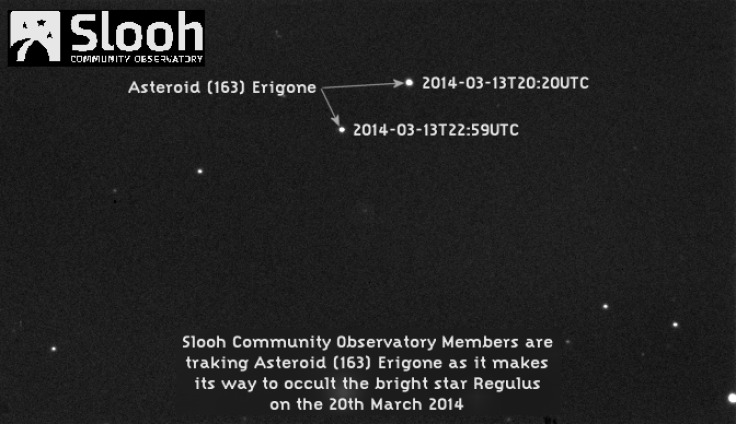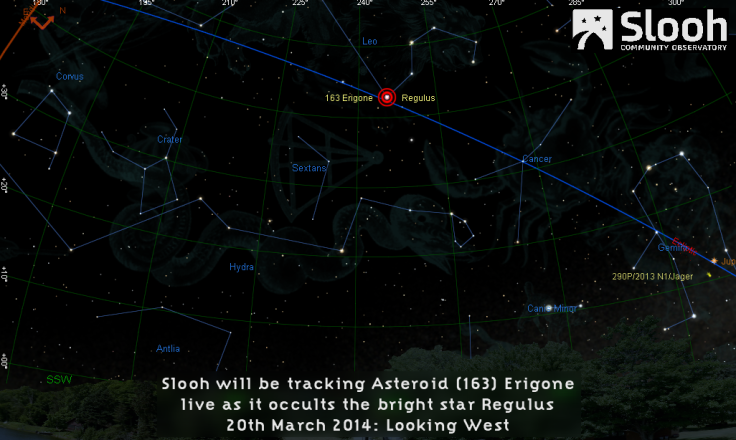Asteroid Occultation Live Stream: Watch 45-Mile Wide Asteroid Cause Cosmic Black Out Of Regulus Here [VIDEO]

A 45-mile wide asteroid will pass in front of one of the brightest stars in the universe, temporarily causing it to disappear from the night sky. A live stream of the occultation will begin at 1:45 a.m. EDT on March 20, courtesy of Slooh.

Occultation occurs when an object passes in front of another object, blocking it from the view of the observer. On Thursday, while asteroid 163 Erigone is pretty big, approximately 45-miles wide, it will be closer to Earth and will appear to be bigger than Regulus, a bright star located about 78 light years from Earth in the constellation Leo. A solar eclipse, when the moon passes in front of the sun, is an example of an another example of occultation.
The best place to view the asteroid occultation will be on the east coast of the United States. Depending on one’s location, the occultation could last up to 14 seconds. During that time, Regulus will be blacked out by the asteroid, a rare event and the brightest star to be occulted in 2014.
Bob Berman, a Slooh astronomer, said in a statement, “It's rare for a truly bright star to be eclipsed. And even when this happens, the shadow of the asteroid is usually cast over some remote piece of ocean or wilderness. In my entire 40 years as a professional astronomer, I've never witnessed a star as bright as Regulus -- Leo's "alpha" luminary -- being blocked as seen along a populated Earthly path in an easily accessible region. That's what will happen early Thursday morning.”
Regulus is an incredibly bright star, the 22nd brightest star in the sky and much brighter than the sun. According to Earthsky, if Regulus replaced the sun the Earth and all humanity would be doomed as the oceans would almost immediately begin to boil and the atmosphere would be quickly stripped from the planet.
The occultation will be more than a cool astronomy event as researchers will gain new insights on the asteroid itself. Paul Cox, Slooh director, said in a statement, “There is more to an occultation like this than first meets the eye – it’s more than just a small white dot being snuffed out for 14-seconds; with accurate timing from a number of observers spread along the path, we can actually determine the asteroid’s size and shape – to a remarkable degree of accuracy.”
The asteroid occultation live stream from Slooh will originate from New York City and can be viewed below. The Slooh broadcast begins at 10:45 p.m. PDT,1:45 a.m. EDT with the occultation expected to begin at 10:55 p.m. PDT, 1:55 a.m. EDT.
© Copyright IBTimes 2024. All rights reserved.












